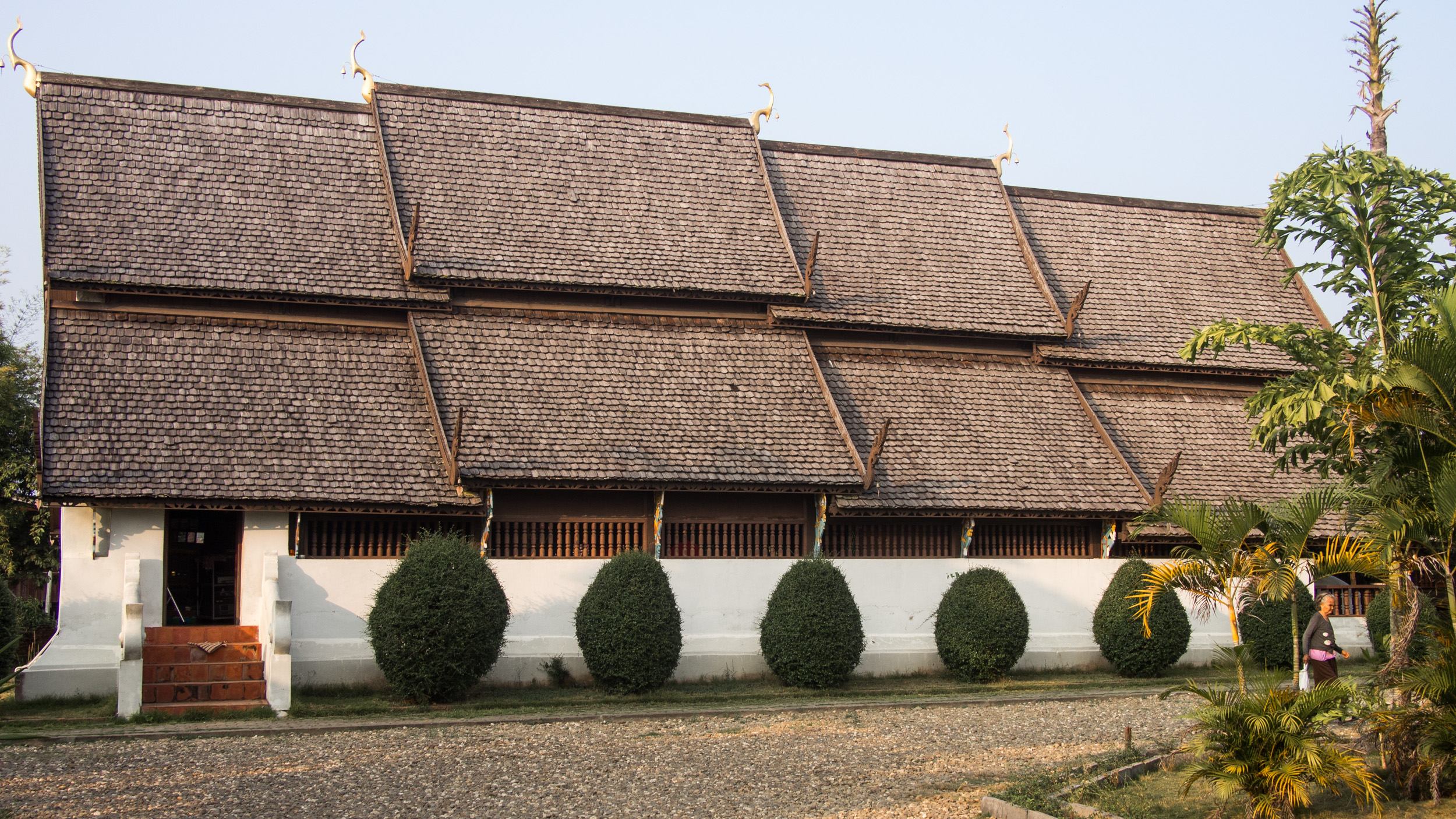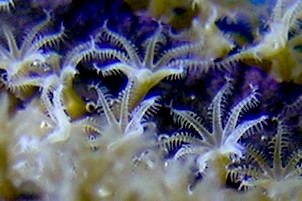|
Daihua
''Daihua sanqiong'' is a possible ancestor of comb jellies. It was a sessile relative to comb jellies. It had combs with cilia just like modern day comb jellies. It is named after the Dai people. The name means Dai flower. In 2019, ''Daihua'' and other Cambrian forms were hypothesized to be stem-group ctenophores. This leads to the assertion that ctenophores evolved from immotile, suspensivorous forms, a lifestyle similar to that of polyps. Cladogram after Zhao ''et al.'', 2019: See also * ''Xianguangia'' * ''Dinomischus'' * ''Siphusauctum ''Siphusauctum'' is an extinct genus of filter-feeding animals that lived during the Middle Cambrian about 510 million years ago. Attached to the substrate by a holdfast, it had a tulip-shaped body, called the calyx, into which it actively pumpe ...'' References Prehistoric animals Cambrian genera Fossil taxa described in 2019 Animals described in 2019 {{Cambrian-animal-stub ... [...More Info...] [...Related Items...] OR: [Wikipedia] [Google] [Baidu] |
Comb Jellies
Ctenophora (; ctenophore ; ) comprise a phylum of marine invertebrates, commonly known as comb jellies, that inhabit sea waters worldwide. They are notable for the groups of cilia they use for swimming (commonly referred to as "combs"), and they are the largest animals to swim with the help of cilia. Depending on the species, adult ctenophores range from a few millimeters to in size. Only 100 to 150 species have been validated, and possibly another 25 have not been fully described and named. The textbook examples are cydippids with egg-shaped bodies and a pair of retractable tentacles fringed with tentilla ("little tentacles") that are covered with colloblasts, sticky cells that capture prey. Their bodies consist of a mass of jelly, with a layer two cells thick on the outside, and another lining the internal cavity. The phylum has a wide range of body forms, including the egg-shaped cydippids with retractable tentacles that capture prey, the flat generally combless plat ... [...More Info...] [...Related Items...] OR: [Wikipedia] [Google] [Baidu] |
Cambrian Stage 3
Cambrian Stage 3 is the still unnamed third stage of the Cambrian. It succeeds Cambrian Stage 2 and precedes Cambrian Stage 4, although neither its base nor top have been formally defined. The plan is for its lower boundary to correspond approximately to the first appearance of trilobites, about million years ago, though the globally asynchronous appearance of trilobites warrants the use of a separate, globally synchronous marker to define the base. The upper boundary and beginning of Cambrian Stage 4 is informally defined as the first appearance of the trilobite genera '' Olenellus'' or ''Redlichia'' around million years ago. Naming The International Commission on Stratigraphy has not officially named the 3rd stage of the Cambrian. The stage approximately corresponds to the "Atdabanian", which is used by geologists working in Siberia. Biostratigraphy The oldest trilobite known is '' Lemdadella'' which appears at the beginning of the ''Fallotaspis'' zone. The Cambrian rad ... [...More Info...] [...Related Items...] OR: [Wikipedia] [Google] [Baidu] |
Dai People
The Dai people (Burmese: ရှမ်းလူမျိုး; khb, ᨴᩱ/ᨴᩱ᩠ᨿ; lo, ໄຕ; th, ไท; shn, တႆး, ; , ; ) refers to several Tai-speaking ethnic groups living in the Xishuangbanna Dai Autonomous Prefecture and the Dehong Dai and Jingpo Autonomous Prefecture of China's Yunnan Province. The Dai people form one of the 56 ethnic groups officially recognized by the People's Republic of China. By extension, the term can apply to groups in Laos, Vietnam, Thailand and Myanmar when Dai is used to mean specifically Tai Yai, Lue, Chinese Shan, Tai Dam, Tai Khao or even Tai in general. For other names, please see the table below. Name ambiguity The Dai people are closely related to the Lao and Thai people who form a majority in Laos and Thailand. Originally, the Tai or Dai, lived closely together in modern Yunnan Province until political chaos and wars in the north at the end of the Tang and Song dynasty and various nomadic peoples prompted some ... [...More Info...] [...Related Items...] OR: [Wikipedia] [Google] [Baidu] |
Polyp (zoology)
A polyp in zoology Zoology ()The pronunciation of zoology as is usually regarded as nonstandard, though it is not uncommon. is the branch of biology that studies the animal kingdom, including the structure, embryology, evolution, classification, habits, and ... is one of two forms found in the phylum Cnidaria, the other being the medusa (biology), medusa. Polyps are roughly cylindrical in shape and elongated at the axis of the vase-shaped body. In solitary polyps, the aboral (opposite to oral) end is attached to the substrate (biology), substrate by means of a disc-like holdfast (biology), holdfast called a pedal disc, while in colony (biology), colonies of polyps it is connected to other polyps, either directly or indirectly. The oral end contains the mouth, and is surrounded by a circlet of tentacles. Classes In the class (biology), class Anthozoa, comprising the sea anemones and corals, the individual is always a polyp; in the class Hydrozoa, however, the indi ... [...More Info...] [...Related Items...] OR: [Wikipedia] [Google] [Baidu] |
Cnidaria
Cnidaria () is a phylum under kingdom Animalia containing over 11,000 species of aquatic animals found both in Fresh water, freshwater and Marine habitats, marine environments, predominantly the latter. Their distinguishing feature is cnidocytes, specialized cells that they use mainly for capturing prey. Their bodies consist of mesoglea, a non-living jelly-like substance, sandwiched between two layers of epithelium that are mostly one cell (biology), cell thick. Cnidarians mostly have two basic body forms: swimming Medusa (biology), medusae and Sessility (motility), sessile polyp (zoology), polyps, both of which are Symmetry (biology)#Radial symmetry, radially symmetrical with mouths surrounded by tentacles that bear cnidocytes. Both forms have a single Body orifice, orifice and body cavity that are used for digestion and respiration (physiology), respiration. Many cnidarian species produce Colony (biology), colonies that are single organisms composed of medusa-like or polyp (z ... [...More Info...] [...Related Items...] OR: [Wikipedia] [Google] [Baidu] |
Xianguangia
''Xianguangia'' is a soft-bodied sea anemone-like fossil animal from the Chengjiang Biota of China. Description ''Xianguangia sinica'' has a cylindrical body with a whorl of nearly 16 tentacles around the oral disc, similar to the modern anthozoans. The tentacles are feather-like with dense pinnules on both sides of the axis which would have been well adapted to filter feeding. A bowl-shaped attachment disc at the basal part might commonly have been buried in the sediment to allow its sedentary strategy on the sea floor. The body above the pedal disc is broad and cylindrical and may correspond to the internal gastrovascular cavity. It displays several distinct longitudinal grooves and ridges on the surface, indicating possible mesenteries. However, its phylogenetic affinity is still in question; it has even been alleged to be related to members of the Ediacara biota. The fossils, found in Yunnan province, China, were initially described as three distinct species, ', ', and ', a ... [...More Info...] [...Related Items...] OR: [Wikipedia] [Google] [Baidu] |
Dinomischus
''Dinomischus ''is a rare fossil animal from the Cambrian period. It reached 20 mm in height, was attached to the sea floor by a stalk, and looked loosely like a flower. The cup-shaped body at the top of the stalk probably fed by filtering the surrounding seawater, and may have created a current to facilitate this. Its mouth and anus sat next to one another. In his pioneering excavations of the Burgess Shale, Charles Doolittle Walcott excavated the first, and at the time only, specimen. It had evidently caught his eye, for he had taken the trouble to carefully photograph it—but he never found the time to describe the organism, and it was not until 1977 that Simon Conway Morris described the animal. He tracked down two further specimens, collected by further expeditions by teams from Harvard and the Royal Ontario Museum, allowing him to produce a reconstruction. He was not able to say much about the organism. It consisted of a calyx (or body) on a long, thin stalk, surroun ... [...More Info...] [...Related Items...] OR: [Wikipedia] [Google] [Baidu] |
Siphusauctum
''Siphusauctum'' is an extinct genus of filter-feeding animals that lived during the Middle Cambrian about 510 million years ago. Attached to the substrate by a holdfast, it had a tulip-shaped body, called the calyx, into which it actively pumped water that entered through pores and filtered out and digested organic contents. It grew to a length of only about . ''Siphusauctum gregarium'' was described in 2012 from numerous fossils recovered from the "Tulip Beds" strata of the Burgess Shale of Yoho National Park, British Columbia, Canada. The generic name comes Latin ' ("cup" or "goblet") and ' ("large"), referring to the general shape and size of the animal. The specific epithet comes from Latin ' ("flock" or "herd") referring to the large numbers of specimens recovered. It is the only species classified under the genus ''Siphusauctum'' and the family Siphusauctidae. The seeming presence of a digestive tract and anus suggest that it is a member of Bilateria, but it cannot be ass ... [...More Info...] [...Related Items...] OR: [Wikipedia] [Google] [Baidu] |
Prehistoric Animals
The following are lists of prehistoric animals: By type Land and avian animals * List of prehistoric amphibian genera *List of prehistoric insects * List of prehistoric mammals * List of fossil bird genera * List of crurotarsan genera Pterosaurs * List of pterosaur genera *List of informally named pterosaurs Dinosaurs * List of dinosaur genera * List of informally named dinosaurs * List of dinosaur species on display * Lists of dinosaur specimens *List of non-avian dinosaur species preserved with evidence of feathers * List of fictional dinosaurs =By location= *List of African dinosaurs * List of Asian dinosaurs * List of Australian and Antarctic dinosaurs * List of dinosaurs and other Mesozoic reptiles of New Zealand *List of European dinosaurs * List of Indian and Madagascan dinosaurs *List of North American dinosaurs **List of Appalachian dinosaurs ** List of archosaurs of the Chinle Formation ** List of dinosaurs of the Morrison Formation * List of South American dinosaurs ... [...More Info...] [...Related Items...] OR: [Wikipedia] [Google] [Baidu] |
Cambrian Genera
The Cambrian Period ( ; sometimes symbolized Ꞓ) was the first geological period of the Paleozoic Era, and of the Phanerozoic Eon. The Cambrian lasted 53.4 million years from the end of the preceding Ediacaran Period 538.8 million years ago (mya) to the beginning of the Ordovician Period mya. Its subdivisions, and its base, are somewhat in flux. The period was established as "Cambrian series" by Adam Sedgwick, who named it after Cambria, the Latin name for 'Cymru' ( Wales), where Britain's Cambrian rocks are best exposed. Sedgwick identified the layer as part of his task, along with Roderick Murchison, to subdivide the large "Transition Series", although the two geologists disagreed for a while on the appropriate categorization. The Cambrian is unique in its unusually high proportion of sedimentary deposits, sites of exceptional preservation where "soft" parts of organisms are preserved as well as their more resistant shells. As a result, our understanding of the Cambrian ... [...More Info...] [...Related Items...] OR: [Wikipedia] [Google] [Baidu] |




